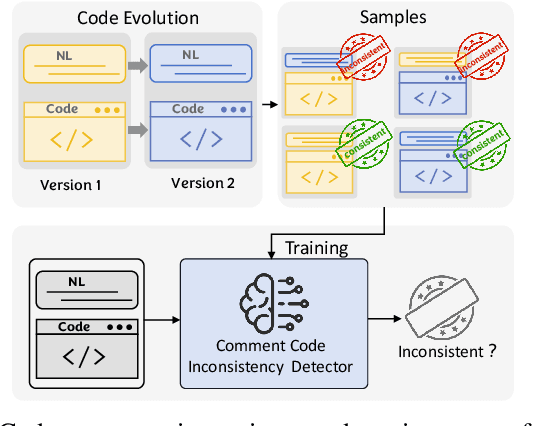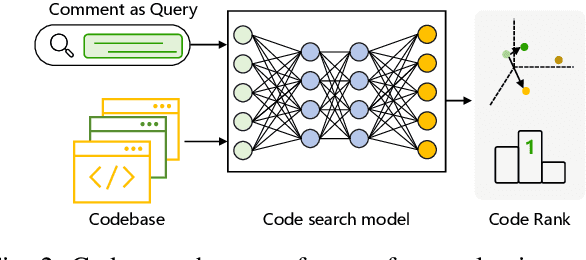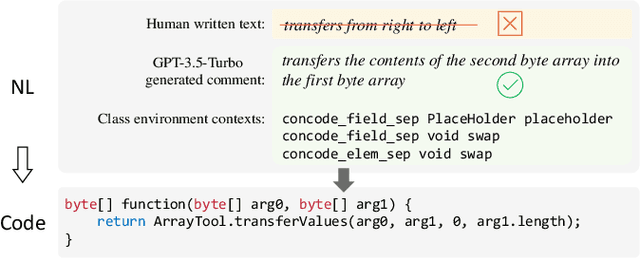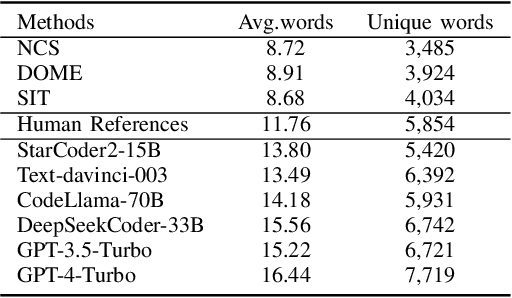Kang Yang
DJI Innovations Inc
SoilX: Calibration-Free Comprehensive Soil Sensing Through Contrastive Cross-Component Learning
Nov 07, 2025Abstract:Precision agriculture demands continuous and accurate monitoring of soil moisture (M) and key macronutrients, including nitrogen (N), phosphorus (P), and potassium (K), to optimize yields and conserve resources. Wireless soil sensing has been explored to measure these four components; however, current solutions require recalibration (i.e., retraining the data processing model) to handle variations in soil texture, characterized by aluminosilicates (Al) and organic carbon (C), limiting their practicality. To address this, we introduce SoilX, a calibration-free soil sensing system that jointly measures six key components: {M, N, P, K, C, Al}. By explicitly modeling C and Al, SoilX eliminates texture- and carbon-dependent recalibration. SoilX incorporates Contrastive Cross-Component Learning (3CL), with two customized terms: the Orthogonality Regularizer and the Separation Loss, to effectively disentangle cross-component interference. Additionally, we design a novel tetrahedral antenna array with an antenna-switching mechanism, which can robustly measure soil dielectric permittivity independent of device placement. Extensive experiments demonstrate that SoilX reduces estimation errors by 23.8% to 31.5% over baselines and generalizes well to unseen fields.
CarbonX: An Open-Source Tool for Computational Decarbonization Using Time Series Foundation Models
Oct 01, 2025Abstract:Computational decarbonization aims to reduce carbon emissions in computing and societal systems such as data centers, transportation, and built environments. This requires accurate, fine-grained carbon intensity forecasts, yet existing tools have several key limitations: (i) they require grid-specific electricity mix data, restricting use where such information is unavailable; (ii) they depend on separate grid-specific models that make it challenging to provide global coverage; and (iii) they provide forecasts without uncertainty estimates, limiting reliability for downstream carbon-aware applications. In this paper, we present CarbonX, an open-source tool that leverages Time Series Foundation Models (TSFMs) for a range of decarbonization tasks. CarbonX utilizes the versatility of TSFMs to provide strong performance across multiple tasks, such as carbon intensity forecasting and imputation, and across diverse grids. Using only historical carbon intensity data and a single general model, our tool achieves a zero-shot forecasting Mean Absolute Percentage Error (MAPE) of 15.82% across 214 grids worldwide. Across 13 benchmark grids, CarbonX performance is comparable with the current state-of-the-art, with an average MAPE of 9.59% and tail forecasting MAPE of 16.54%, while also providing prediction intervals with 95% coverage. CarbonX can provide forecasts for up to 21 days with minimal accuracy degradation. Further, when fully fine-tuned, CarbonX outperforms the statistical baselines by 1.2--3.9X on the imputation task. Overall, these results demonstrate that CarbonX can be used easily on any grid with limited data and still deliver strong performance, making it a practical tool for global-scale decarbonization.
MoL-RL: Distilling Multi-Step Environmental Feedback into LLMs for Feedback-Independent Reasoning
Jul 27, 2025Abstract:Large language models (LLMs) face significant challenges in effectively leveraging sequential environmental feedback (EF) signals, such as natural language evaluations, for feedback-independent chain-of-thought (CoT) reasoning. Existing approaches either convert EF into scalar rewards, losing rich contextual information, or employ refinement datasets, failing to exploit the multi-step and discrete nature of EF interactions. To address these limitations, we propose MoL-RL, a novel training paradigm that integrates multi-step EF signals into LLMs through a dual-objective optimization framework. Our method combines MoL (Mixture-of-Losses) continual training, which decouples domain-specific EF signals (optimized via cross-entropy loss) and general language capabilities (preserved via Kullback-Leibler divergence), with GRPO-based post-training to distill sequential EF interactions into single-step inferences. This synergy enables robust feedback-independent reasoning without relying on external feedback loops. Experimental results on mathematical reasoning (MATH-500, AIME24/AIME25) and code generation (CodeAgent-Test) benchmarks demonstrate that MoL-RL achieves state-of-the-art performance with the Qwen3-8B model, while maintaining strong generalization across model scales (Qwen3-4B). This work provides a promising approach for leveraging multi-step textual feedback to enhance LLMs' reasoning capabilities in diverse domains.
ProDiff: Prototype-Guided Diffusion for Minimal Information Trajectory Imputation
May 29, 2025Abstract:Trajectory data is crucial for various applications but often suffers from incompleteness due to device limitations and diverse collection scenarios. Existing imputation methods rely on sparse trajectory or travel information, such as velocity, to infer missing points. However, these approaches assume that sparse trajectories retain essential behavioral patterns, which place significant demands on data acquisition and overlook the potential of large-scale human trajectory embeddings. To address this, we propose ProDiff, a trajectory imputation framework that uses only two endpoints as minimal information. It integrates prototype learning to embed human movement patterns and a denoising diffusion probabilistic model for robust spatiotemporal reconstruction. Joint training with a tailored loss function ensures effective imputation. ProDiff outperforms state-of-the-art methods, improving accuracy by 6.28\% on FourSquare and 2.52\% on WuXi. Further analysis shows a 0.927 correlation between generated and real trajectories, demonstrating the effectiveness of our approach.
An Efficient Private GPT Never Autoregressively Decodes
May 21, 2025Abstract:The wide deployment of the generative pre-trained transformer (GPT) has raised privacy concerns for both clients and servers. While cryptographic primitives can be employed for secure GPT inference to protect the privacy of both parties, they introduce considerable performance overhead.To accelerate secure inference, this study proposes a public decoding and secure verification approach that utilizes public GPT models, motivated by the observation that securely decoding one and multiple tokens takes a similar latency. The client uses the public model to generate a set of tokens, which are then securely verified by the private model for acceptance. The efficiency of our approach depends on the acceptance ratio of tokens proposed by the public model, which we improve from two aspects: (1) a private sampling protocol optimized for cryptographic primitives and (2) model alignment using knowledge distillation. Our approach improves the efficiency of secure decoding while maintaining the same level of privacy and generation quality as standard secure decoding. Experiments demonstrate a $2.1\times \sim 6.0\times$ speedup compared to standard decoding across three pairs of public-private models and different network conditions.
Benchmarking Spatiotemporal Reasoning in LLMs and Reasoning Models: Capabilities and Challenges
May 16, 2025Abstract:Spatiotemporal reasoning plays a key role in Cyber-Physical Systems (CPS). Despite advances in Large Language Models (LLMs) and Large Reasoning Models (LRMs), their capacity to reason about complex spatiotemporal signals remains underexplored. This paper proposes a hierarchical SpatioTemporal reAsoning benchmaRK, STARK, to systematically evaluate LLMs across three levels of reasoning complexity: state estimation (e.g., predicting field variables, localizing and tracking events in space and time), spatiotemporal reasoning over states (e.g., inferring spatial-temporal relationships), and world-knowledge-aware reasoning that integrates contextual and domain knowledge (e.g., intent prediction, landmark-aware navigation). We curate 26 distinct spatiotemporal tasks with diverse sensor modalities, comprising 14,552 challenges where models answer directly or by Python Code Interpreter. Evaluating 3 LRMs and 8 LLMs, we find LLMs achieve limited success in tasks requiring geometric reasoning (e.g., multilateration or triangulation), particularly as complexity increases. Surprisingly, LRMs show robust performance across tasks with various levels of difficulty, often competing or surpassing traditional first-principle-based methods. Our results show that in reasoning tasks requiring world knowledge, the performance gap between LLMs and LRMs narrows, with some LLMs even surpassing LRMs. However, the LRM o3 model continues to achieve leading performance across all evaluated tasks, a result attributed primarily to the larger size of the reasoning models. STARK motivates future innovations in model architectures and reasoning paradigms for intelligent CPS by providing a structured framework to identify limitations in the spatiotemporal reasoning of LLMs and LRMs.
Large Language Models are Qualified Benchmark Builders: Rebuilding Pre-Training Datasets for Advancing Code Intelligence Tasks
Apr 28, 2025



Abstract:Pre-trained code models rely heavily on high-quality pre-training data, particularly human-written reference comments that bridge code and natural language. However, these comments often become outdated as software evolves, degrading model performance. Large language models (LLMs) excel at generating high-quality code comments. We investigate whether replacing human-written comments with LLM-generated ones improves pre-training datasets. Since standard metrics cannot assess reference comment quality, we propose two novel reference-free evaluation tasks: code-comment inconsistency detection and semantic code search. Results show that LLM-generated comments are more semantically consistent with code than human-written ones, as confirmed by manual evaluation. Leveraging this finding, we rebuild the CodeSearchNet dataset with LLM-generated comments and re-pre-train CodeT5. Evaluations demonstrate that models trained on LLM-enhanced data outperform those using original human comments in code summarization, generation, and translation tasks. This work validates rebuilding pre-training datasets with LLMs to advance code intelligence, challenging the traditional reliance on human reference comments.
Is Discretization Fusion All You Need for Collaborative Perception?
Mar 18, 2025Abstract:Collaborative perception in multi-agent system enhances overall perceptual capabilities by facilitating the exchange of complementary information among agents. Current mainstream collaborative perception methods rely on discretized feature maps to conduct fusion, which however, lacks flexibility in extracting and transmitting the informative features and can hardly focus on the informative features during fusion. To address these problems, this paper proposes a novel Anchor-Centric paradigm for Collaborative Object detection (ACCO). It avoids grid precision issues and allows more flexible and efficient anchor-centric communication and fusion. ACCO is composed by three main components: (1) Anchor featuring block (AFB) that targets to generate anchor proposals and projects prepared anchor queries to image features. (2) Anchor confidence generator (ACG) is designed to minimize communication by selecting only the features in the confident anchors to transmit. (3) A local-global fusion module, in which local fusion is anchor alignment-based fusion (LAAF) and global fusion is conducted by spatial-aware cross-attention (SACA). LAAF and SACA run in multi-layers, so agents conduct anchor-centric fusion iteratively to adjust the anchor proposals. Comprehensive experiments are conducted to evaluate ACCO on OPV2V and Dair-V2X datasets, which demonstrate ACCO's superiority in reducing the communication volume, and in improving the perception range and detection performances. Code can be found at: \href{https://github.com/sidiangongyuan/ACCO}{https://github.com/sidiangongyuan/ACCO}.
ADMN: A Layer-Wise Adaptive Multimodal Network for Dynamic Input Noise and Compute Resources
Feb 11, 2025Abstract:Multimodal deep learning systems are deployed in dynamic scenarios due to the robustness afforded by multiple sensing modalities. Nevertheless, they struggle with varying compute resource availability (due to multi-tenancy, device heterogeneity, etc.) and fluctuating quality of inputs (from sensor feed corruption, environmental noise, etc.). Current multimodal systems employ static resource provisioning and cannot easily adapt when compute resources change over time. Additionally, their reliance on processing sensor data with fixed feature extractors is ill-equipped to handle variations in modality quality. Consequently, uninformative modalities, such as those with high noise, needlessly consume resources better allocated towards other modalities. We propose ADMN, a layer-wise Adaptive Depth Multimodal Network capable of tackling both challenges - it adjusts the total number of active layers across all modalities to meet compute resource constraints, and continually reallocates layers across input modalities according to their modality quality. Our evaluations showcase ADMN can match the accuracy of state-of-the-art networks while reducing up to 75% of their floating-point operations.
GWRF: A Generalizable Wireless Radiance Field for Wireless Signal Propagation Modeling
Feb 08, 2025



Abstract:We present Generalizable Wireless Radiance Fields (GWRF), a framework for modeling wireless signal propagation at arbitrary 3D transmitter and receiver positions. Unlike previous methods that adapt vanilla Neural Radiance Fields (NeRF) from the optical to the wireless signal domain, requiring extensive per-scene training, GWRF generalizes effectively across scenes. First, a geometry-aware Transformer encoder-based wireless scene representation module incorporates information from geographically proximate transmitters to learn a generalizable wireless radiance field. Second, a neural-driven ray tracing algorithm operates on this field to automatically compute signal reception at the receiver. Experimental results demonstrate that GWRF outperforms existing methods on single scenes and achieves state-of-the-art performance on unseen scenes.
 Add to Chrome
Add to Chrome Add to Firefox
Add to Firefox Add to Edge
Add to Edge